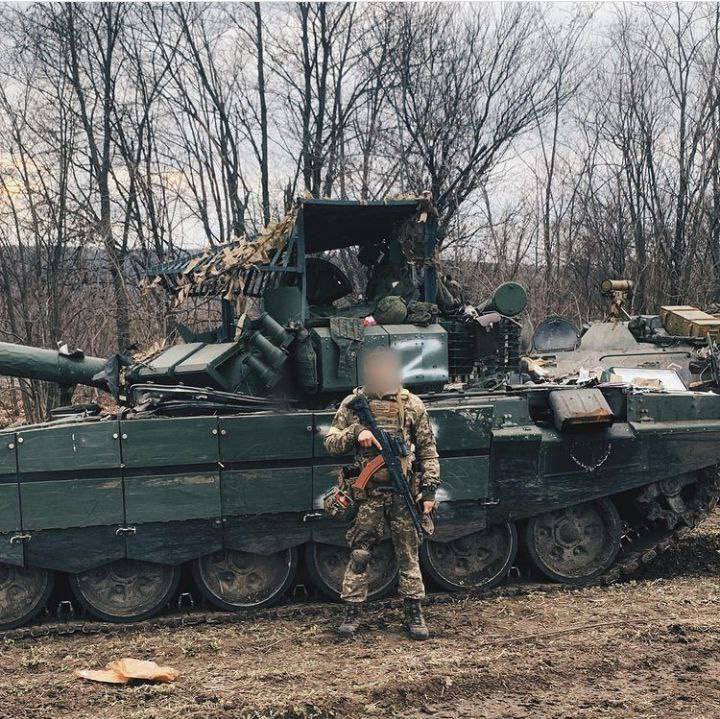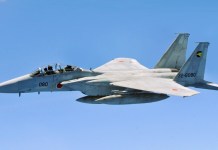The Russian defense and industrial conglomerate Rostec has taken a jibe at the Abrams Main Battle Tanks (MBTs), stating that the Americans initially mocked the drone protection on Russian tanks and then copied it to enhance protection on their own tanks.
Oleg Yevtushenko, executive director of the Russian defense corporation Rostec, said that the cope cages installed on Russian tanks to defend them against drone strikes have led to the technology’s adoption by manufacturers worldwide, including the US firm that manufactures the Abrams, state news agency TASS reported.
“I would like to note that some people abroad initially ridiculed our certain innovations, in particular the so-called cope cages. However, some countries are now starting to adopt this practice. It has been reported recently that the US plans to reinforce the protection of its Abrams tanks, which, according to data at hand, have performed poorly on the battlefield,” Yevtushenko said. “The Pentagon plans to outfit them with a special coating that reduces their thermal signature and with passive protection elements against FPV drone attacks. In effect, the special coating is the answer to our Cloak, and the additional protection is the answer to our set of screens, meshes, lattices, and other outside-mounted structures.”
He further emphasized that Russian armored vehicles are particularly well-suited to counter anti-tank threats and can effectively fend off numerous assaults from advanced weaponry. “There have been cases when dozens of Ukrainian drones hit the T-90M Breakthrough, but it remained combat-ready,” he told lawmakers.
These comments come days after the US Army allocated $107 million to enhance the survivability of over 400 of its M1 Abrams MBTs, as seen in the 2026 Procurement of Weapons and Tracked Combat Vehicles (W&TCV, Army) report.
The upgrades include “belly” protection against mines and improvised explosive devices, laser attack warning receivers, top attack protection, and “stealth-enhancing” coating.

The majority of the funding, nearly $92 million, will be allocated to the GM1914 VPS Top Attack Protection (TAP) passive armor kits, designed to provide additional overhead protection for the crew compartment and hatches against shaped-charge and explosively formed projectiles (EFPs).
It is pertinent to note that, although the service did not elaborate on what this top attack protection system would look like, it is widely believed to be similar to the so-called Cope Cages, based on the vague description.
TAP “is a passive add-on armor to the base vehicle configuration,” states the Army’s Fiscal Year 2026 Justification Book. “It is strategically placed over crew compartments and hatches, working in tandem with the base vehicle armor to mitigate damage from overhead threats. It is most effective against Explosively Formed Projectiles [EFPs] and Shaped Charge Jets.”
This protective enhancement is sought based on the experience in the Ukraine War, where the M1A1 Abrams deployed by the Ukrainian Army suffered a debacle as they were relentlessly hammered by cheap and expendable Russian drones, leading to their eventual withdrawal from the battlefield, as previously explained in detail by the EurAsian Times.
Like the majority of Western main battle tanks, the Abrams are designed to engage in “tank-on-tank” combat and are equipped with substantial frontal protection. However, the Russians struck them where they were most vulnerable: from above.
The Abrams proved to be extremely vulnerable to first-person view (FPV) attack drones, modern anti-tank guided weapons (ATGWs), and guided artillery.
It wasn’t much different for the Russian tanks, as cheap and expendable kamikaze and FPV drones began to dominate the battlefield. Several Soviet-era as well as modern and advanced Russian tanks were obliterated in drone strikes from the top, seen in a plethora of videos circulating on social media.
However, Russia adapted to these threats and developed Cope Cages and other anti-drone protections that initially seemed absurd but gained popularity as the conflict dragged on—something that Rostec can now comfortably boast about.
Russian Tanks & Their Evolving Drone Protection
Russia started adding cope cages to its tanks at least a year ahead of the invasion of Ukraine. The first Cope Cages were spotted on Russian T-80 tanks marching into Crimea in November 2021. At the time, a viral TikTok video showed a Soviet-era T-80 tank trudging through the mud with its turret covered with what looked like a peculiar metal slat roof.
After the invasion was launched and it realised it was threatened by Ukrainian troops brandishing drones and top-attack anti-tank weapons such as Javelins, Russia dramatically accelerated that effort, with widespread use observed by March–April 2022, particularly on Soviet-era T-72 and T-80 tanks. The cope cages eventually made their way to all major Russian battle tanks deployed on the frontline.
Cope cages, also known as slat armor, bar armor, cage armor, and standoff armor, are a unique defense mechanism employed in heavy military vehicles to reduce the damage caused by high-explosive anti-tank (HEAT) weaponry. Akin to welded grates on the top of the tanks, these cages aim to prematurely detonate or deflect munitions, protecting vulnerable turret tops and hulls from FPV and other anti-tank weapons.
This arrangement was widely ridiculed by Western-based experts and analysts, who called it an exercise in futility. The term “cope cage” itself emerged as a mocking label, reflecting skepticism about their effectiveness against modern anti-tank weapons. They labeled the protective slats a desperate and ineffective response to Ukraine’s advanced weaponry.

These Western analysts are entirely wrong because not only did the grates prove to be unsuccessful in deflecting missiles, but they also restricted the turret mobility, making operations chaotic. Moreover, the Ukrainian Javelins quickly broke through the cages and destroyed the tanks.
The US Army was not a fan of cope cages. It instead explored modular armor upgrades and active protection systems (APS), such as the formidable Israeli Trophy. However, as the war dragged on and Russia introduced loitering munitions like the Lancet that destroyed a majority of Ukraine’s Western-origin artillery, even Kyiv’s tanks, howitzers, and field gun units adopted them.
Following reports that the tanks were pulled from the front lines due to vulnerabilities to Russian FPV kamikaze drones in April-May 2024, Ukraine started to equip the American Abrams with factory-standard anti-drone armor screens, along with additional Soviet-designed Kontakt-1 explosive reactive armor (ERA), as reported by the EurAsian Times. In addition to the Abrams, the T-72 and the Leopard-2 were also equipped with Cope cages.
Initially mocked, these slat armor designs began to gain popularity globally. Even Israel installed such cages atop their own Merkava tanks at the outbreak of the war with Hamas.
Russia installed cope cages on several other platforms, including submarines and flamethrowers. It then introduced a host of other drone protection measures, which were seen as bizarre innovations, such as the turtle tank —a shed-like structure installed atop tanks to protect them from drone attacks. The structure was later equipped with electronic warfare weapons, disrupting the Ukrainian operations.
No matter how bizarre, battlefield modifications and innovations have defined the Ukraine War. It has been a learning experience for the world, particularly as it has demonstrated that both cheap drones and heavy tanks remain central to conventional combat even today.
The proliferation of cheap, effective drones in Ukraine has pushed Western defense industries to prioritize anti-drone technologies, including slat armor-inspired designs. NATO exercises in 2024–2025 have tested drone countermeasures, and some reports suggest modular “cage-like” kits are being evaluated for rapid deployment.
For the US, the deployment of older, redundant Abrams has been a crucial learning experience, one that has made the “desperate” Cope Cages look like a suitable alternative.
- Contact the author at sakshi.tiwari9555 (at) gmail.com
- Follow EurAsian Times on Google News




